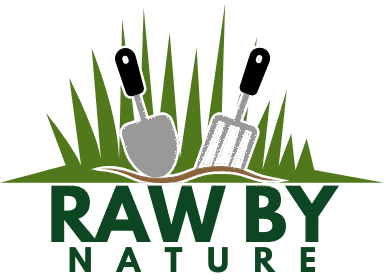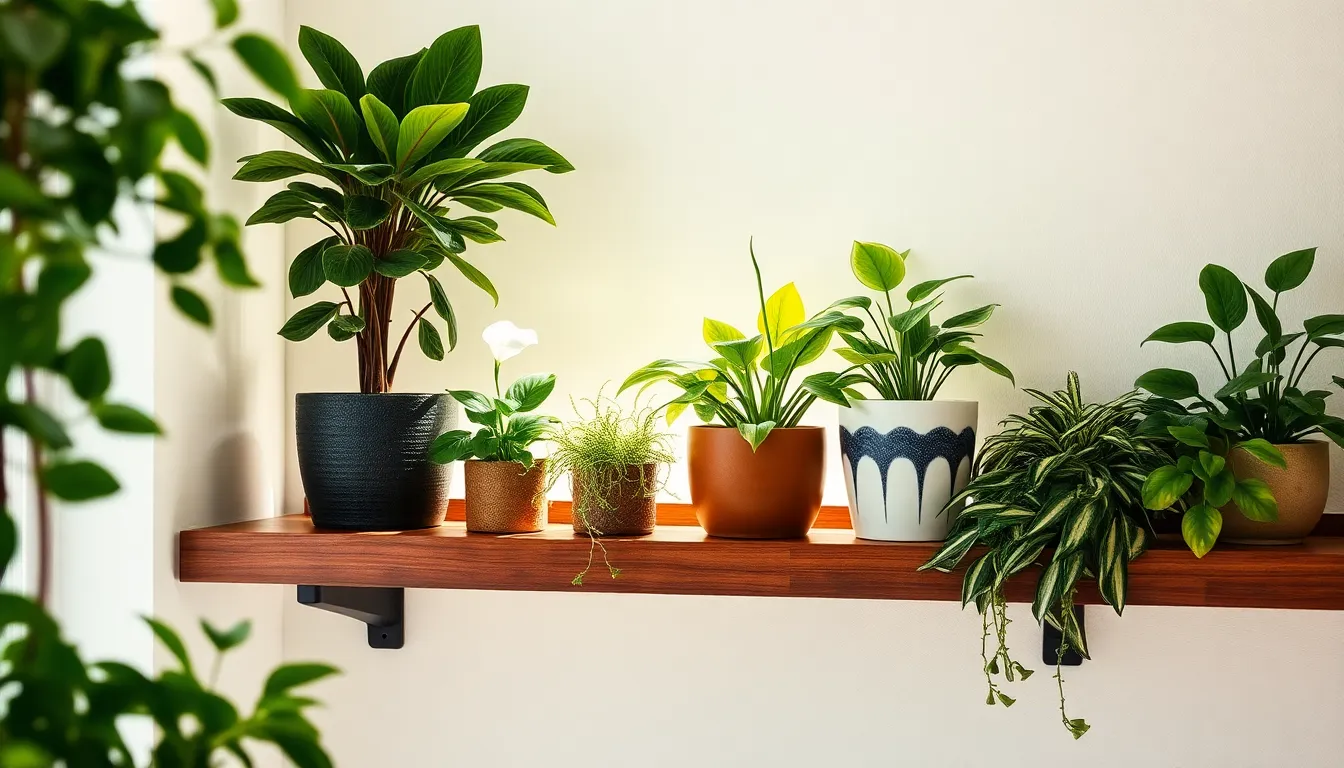In the bustling corners of our urban sanctuaries, where space is precious and sunlight scarce, the joy of nurturing greenery need not be a distant dream. Whether you’re a seasoned gardener with a flourishing balcony or a novice eager to bring a touch of nature indoors, low light plants offer a delightful solution that transforms even the coziest apartments into lush, vibrant retreats.
These resilient marvels of nature invite you to explore the art of indoor gardening without the need for expansive windows or constant sunbeams. You’ll discover how to select and care for plants that thrive in the shadows, making it possible to cultivate a verdant oasis in the heart of your home. By the end of this article, both beginners and experienced gardeners will be equipped with the knowledge to choose the best low light companions and ensure they flourish, even in the dimmest of corners.
Top Low Light Plant Choices
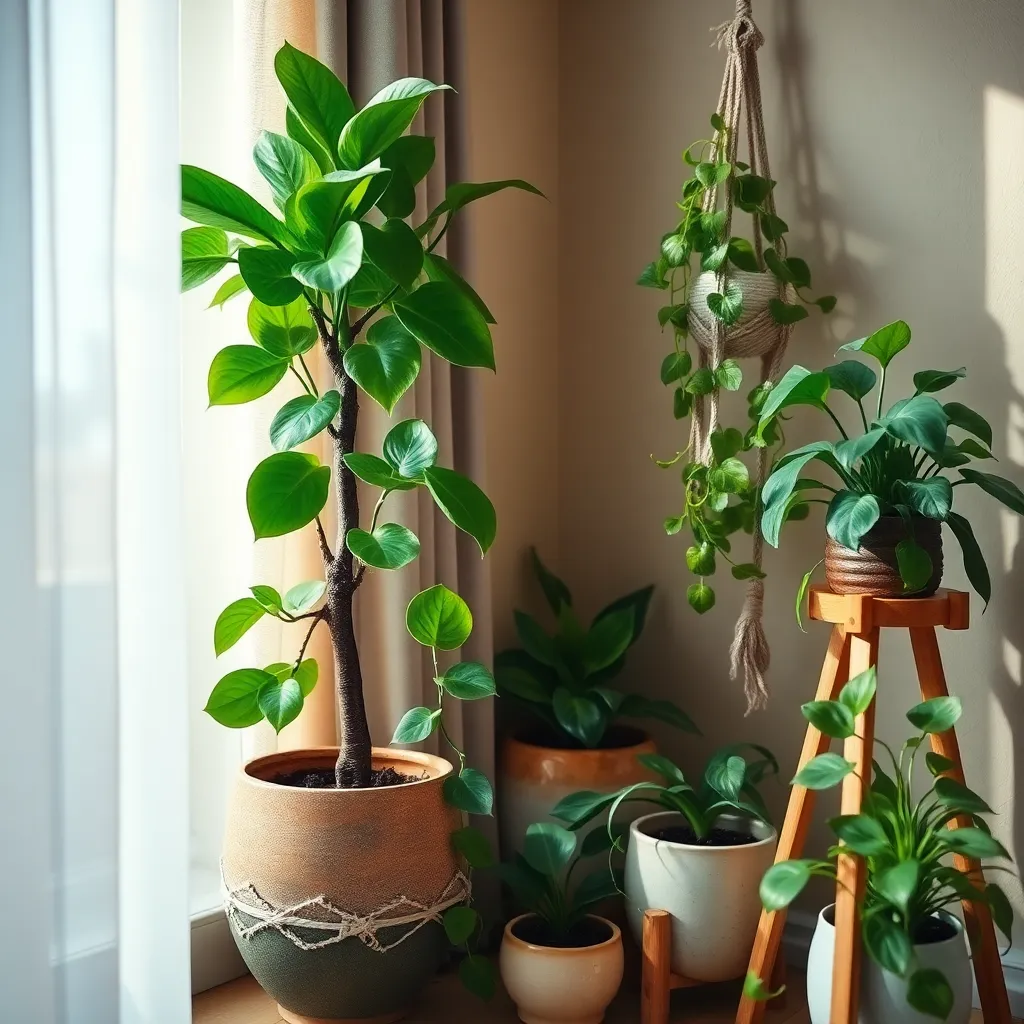
One of the top choices for low light conditions is the Snake Plant, known for its hardy nature and air-purifying qualities. It’s recommended to use a well-draining potting mix, such as a cactus blend, and water only when the soil is completely dry, approximately every two to three weeks.
Another excellent option is the Pothos, which thrives in indirect light and is forgiving to occasional neglect. To encourage lush growth, trim back any leggy vines and use a balanced liquid fertilizer once a month during the growing season.
The ZZ Plant is perfect for those who might forget to water regularly, as it can withstand drought conditions. Place it in a corner of your apartment that receives indirect sunlight and water it thoroughly only when the top inch of soil feels dry to the touch.
For a touch of color, consider the Peace Lily, which can adapt to low light environments while still producing beautiful white blooms. Ensure the soil remains slightly moist but not soggy and mist the leaves occasionally to increase humidity, which can encourage flowering.
Maximizing Small Apartment Space
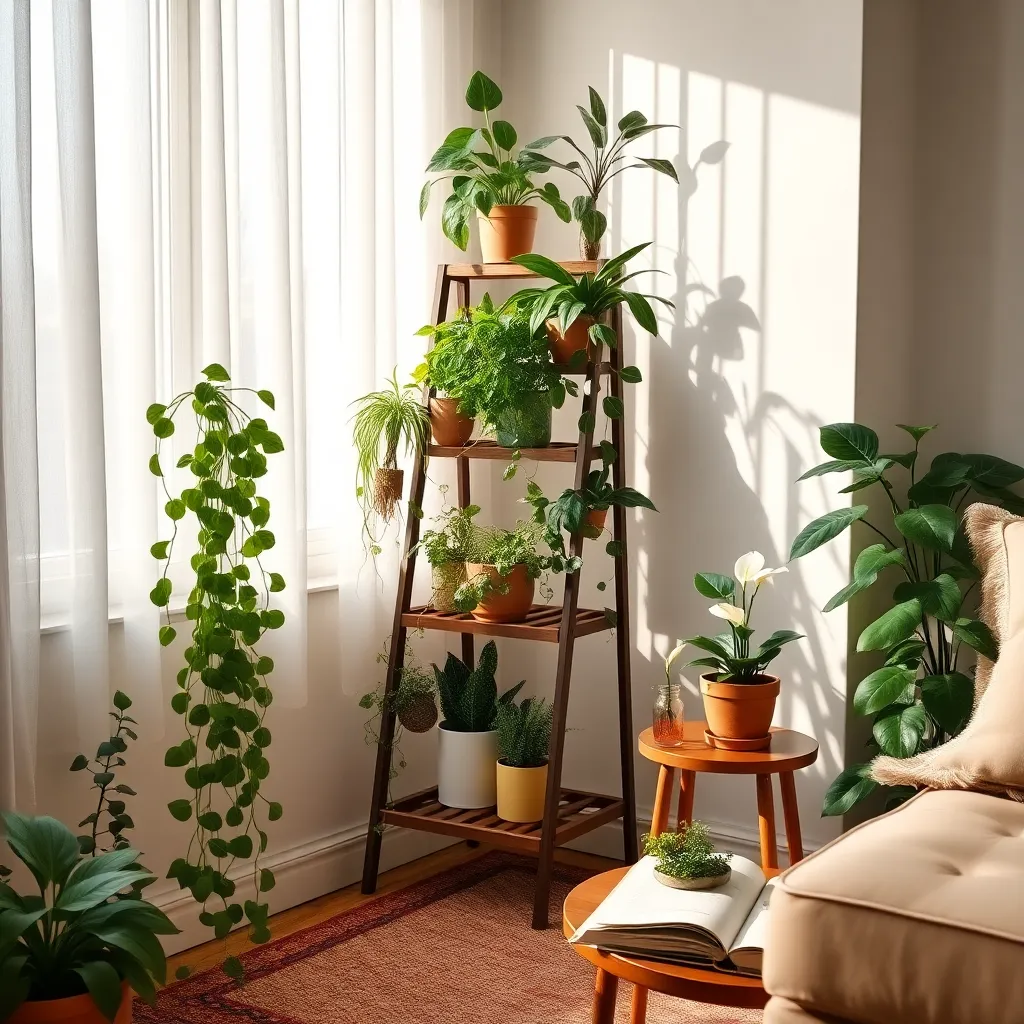
Maximizing small apartment space for gardening can be a creative and rewarding challenge. Consider using vertical space by installing shelves or hanging planters to elevate your plants and make the most of your limited floor area.
Another practical approach is to choose multi-tiered plant stands that allow you to arrange several plants in a compact area. These stands can accommodate a variety of low light plants, ensuring that each receives adequate air circulation and access to indirect light.
When selecting containers for your apartment garden, opt for lightweight and compact pots that can easily be moved around. Additionally, using self-watering pots can help manage watering schedules, ensuring your plants receive consistent moisture without frequent attention.
It’s important to rotate your plants regularly to ensure even growth and light exposure, especially in low light conditions. This simple step can prevent your plants from growing unevenly and encourage a fuller, more balanced appearance.
Caring for Shade-Loving Greens
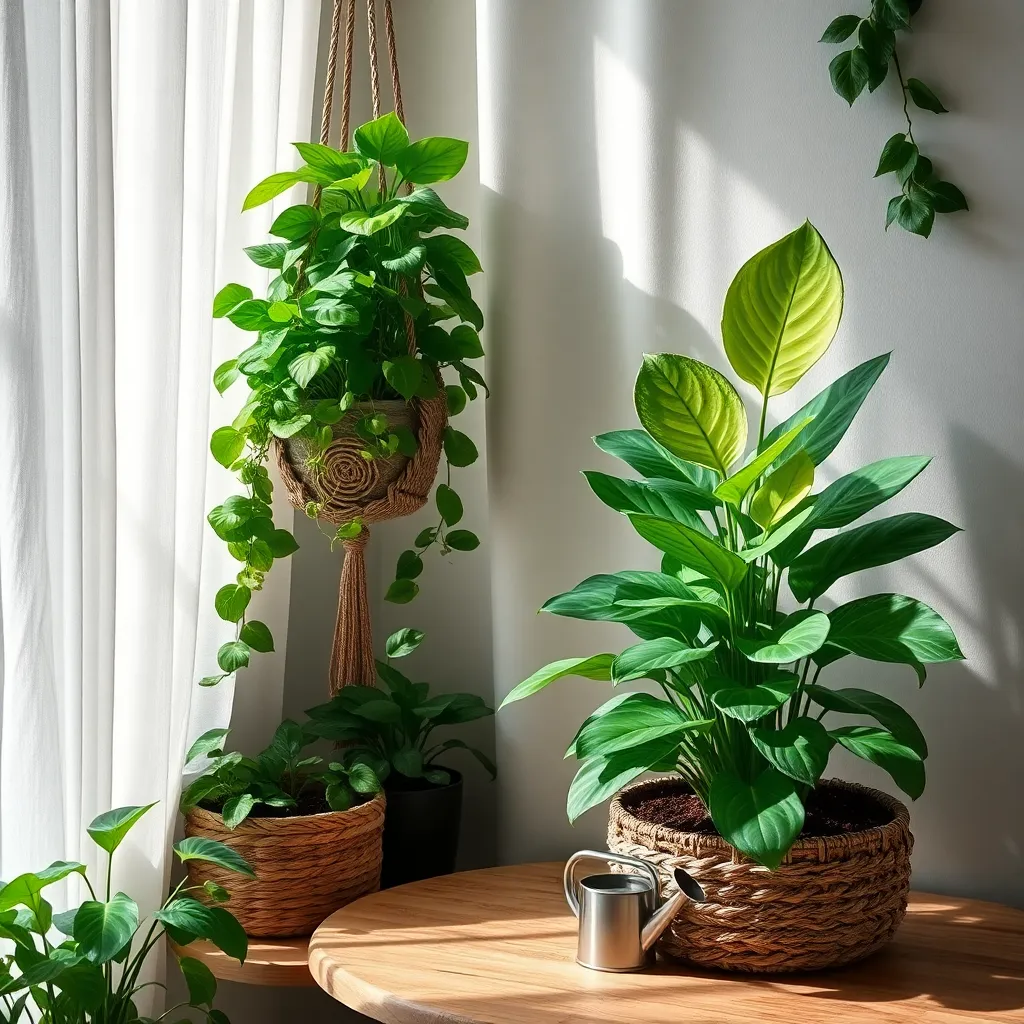
Shade-loving greens like ferns and peace lilies are perfect for small apartments with limited natural light. These plants thrive in low-light conditions, making them ideal companions for those often shaded corners.
To care for these plants, ensure you use a potting mix rich in organic matter, which helps retain moisture without becoming waterlogged. Watering should be done when the top inch of soil feels dry to the touch, typically once a week, depending on your apartment’s humidity.
Fertilize your shade-loving greens sparingly, as they require less nutrition compared to sun-loving plants. A diluted liquid fertilizer applied every two months during the growing season is sufficient to keep them healthy and vibrant.
Advanced gardeners can experiment with using humidity trays or small humidifiers to enhance the ambiance for their shade-loving greens. Incorporating these techniques can help mimic their natural environment, promoting lush growth.
Decorative Potting Ideas
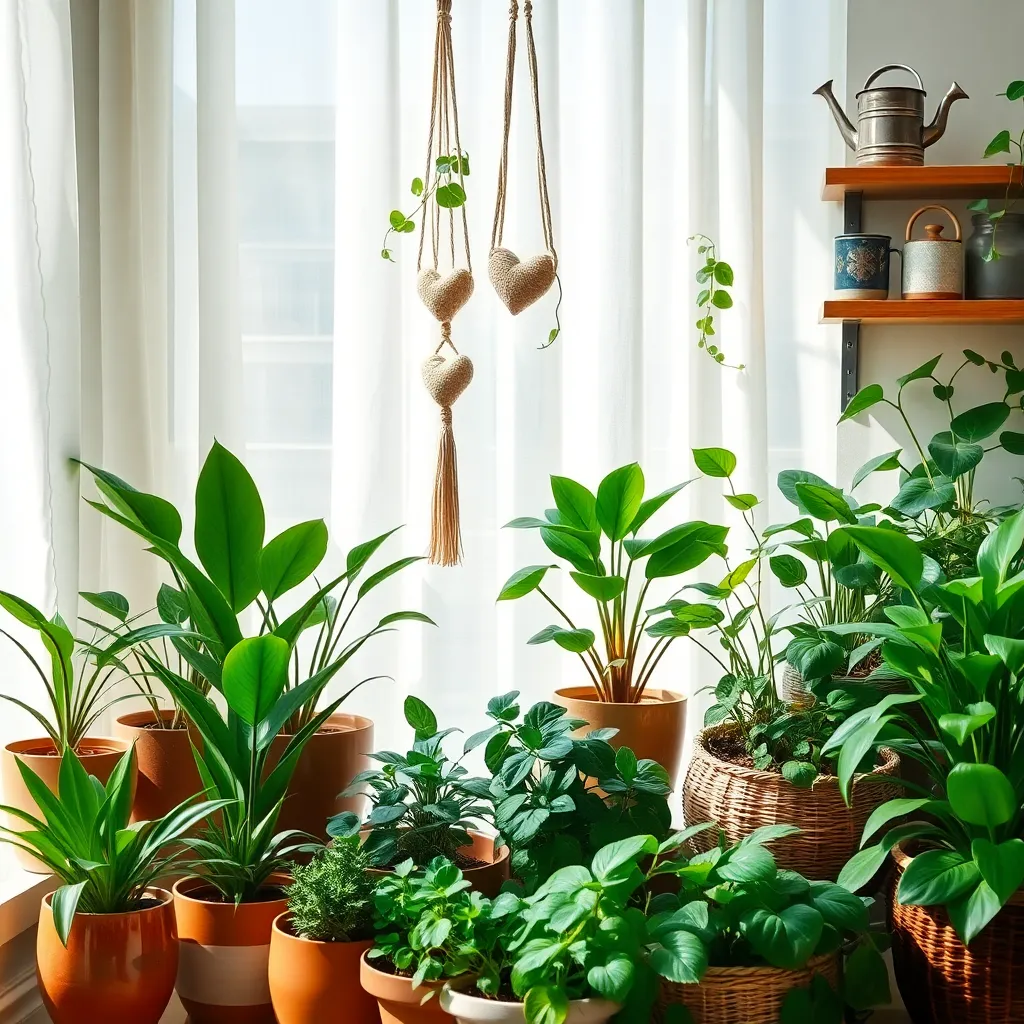
Enhancing your apartment with decorative pots can make your low-light plants stand out beautifully. Begin by selecting pots that are not only visually appealing but also suitable for the plant’s health, such as those with proper drainage holes.
It’s essential to choose the right size pot to promote healthy root growth. A pot that’s too large can lead to overwatering, so opt for a snug fit that encourages root-bound conditions which many low-light plants, like snake plants, thrive in.
Consider using materials like terracotta, ceramic, or even recycled containers to add a unique touch to your indoor garden. These materials can maintain moisture levels effectively, which is crucial for plants that don’t require frequent watering, making them ideal for busy apartment dwellers.
Layering your pot with the right substrate is vital for plant health. Start with a layer of small stones or pebbles to improve drainage, followed by a mix of peat moss and perlite to create a lightweight, well-aerated soil base.
- Tip for beginners: Opt for self-watering pots that help maintain consistent moisture levels without daily attention.
- Advanced gardeners: Experiment with pot designs that incorporate vertical layers or built-in lighting to enhance both aesthetics and plant growth.
Decorating with pots allows for creativity, such as using color schemes that complement your apartment decor. Try grouping pots of varying heights and colors for a visually striking display that also maximizes limited space.
Finally, remember that regular care is key to maintaining both the plant and the pot’s appearance. Wipe down pots occasionally to prevent dust accumulation, and refresh the topsoil layer annually to keep the plant nourished and thriving.
Troubleshooting Common Plant Issues
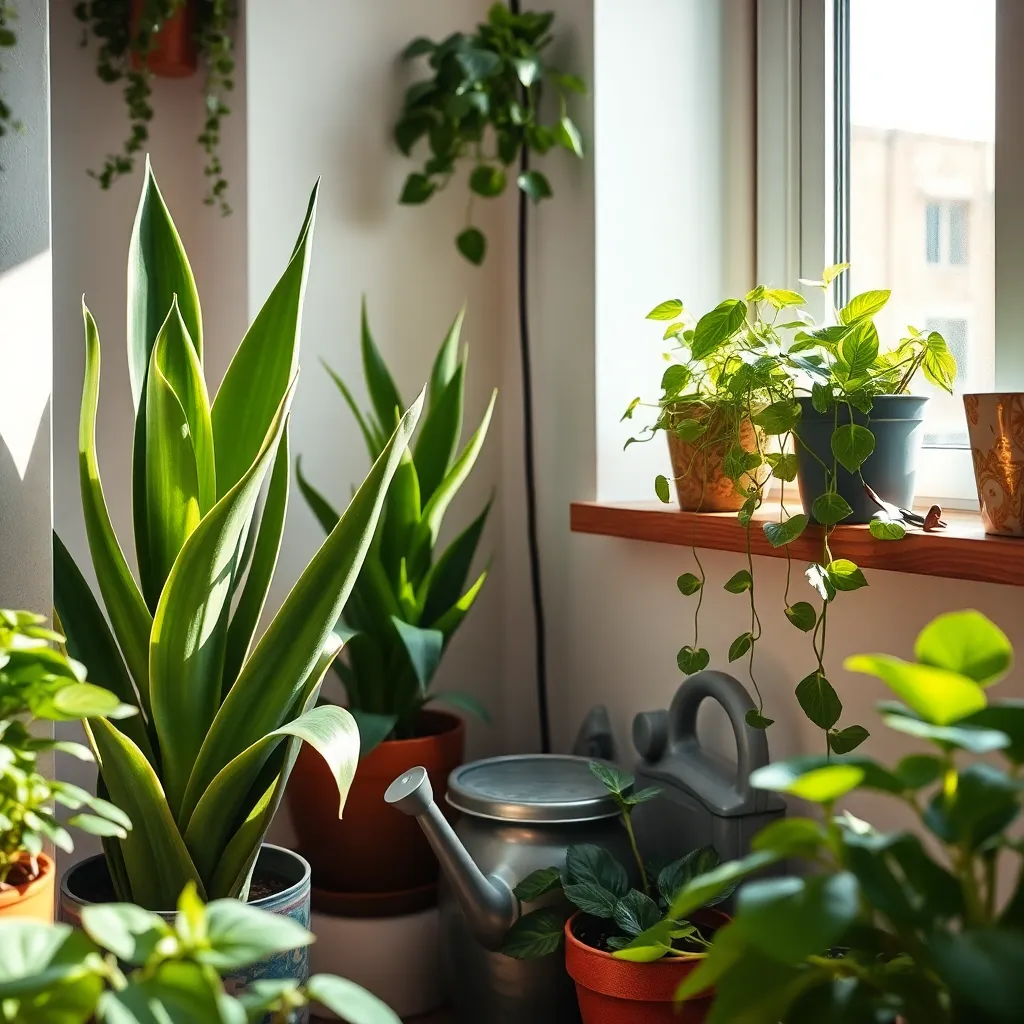
Dealing with drooping leaves in low light plants can be a common issue. Often, this is caused by overwatering, which leads to root rot. To remedy this, ensure your plant sits in well-draining soil that doesn’t retain excess moisture. Consider using a pot with drainage holes and a mix of potting soil and perlite for optimal aeration.
Yellowing leaves often indicate a lack of light or improper watering. In low light conditions, it’s crucial to maintain a consistent watering schedule—typically every 10-14 days. Always check the top inch of soil; it should be dry before you water your plant again. If yellowing persists, gradually move the plant to a slightly brighter spot to see if conditions improve.
Pests, such as spider mites or aphids, can occasionally trouble your indoor plants. Regularly inspect your plants, especially the undersides of leaves, for any signs of infestation. If pests are found, treat with a gentle insecticidal soap or a homemade mix of water and mild dish soap. For more stubborn infestations, neem oil can be applied as a natural remedy, ensuring to cover all parts of the plant.
Another frequent concern is stunted growth, which might stem from nutrient deficiencies. Low light plants generally need less fertilization, but they still benefit from a balanced liquid fertilizer applied monthly during the growing season. Ensure your plant isn’t pot-bound; if roots are tightly packed, consider repotting in a slightly larger container to encourage healthy growth.
Conclusion: Growing Success with These Plants
In exploring the lush world of low light plants for small apartments, we uncovered five key relationship concepts that can profoundly enrich your living space and interpersonal bonds. First, we learned how nurturing a plant mirrors nurturing a relationship, requiring attention, care, and patience. Second, we saw how the simple act of introducing greenery can foster a calming environment, promoting mental well-being. Third, the collaborative effort of choosing and caring for plants can strengthen communication and teamwork. Fourth, plants remind us of the importance of adaptability, thriving even in less-than-ideal conditions. Finally, we discovered how shared responsibilities can enhance mutual respect and understanding.
As an actionable step, why not take a moment today to discuss with your partner or roommate which plant you’d both like to welcome into your home? This simple act can spark deeper conversations and shared goals.
Remember to save or bookmark this article as your guide to cultivating both plant life and relationship vitality. Looking ahead, let these green companions inspire a thriving, resilient partnership that flourishes in any environment. Embrace this journey, and watch both your plants and relationships grow with love and intention.
